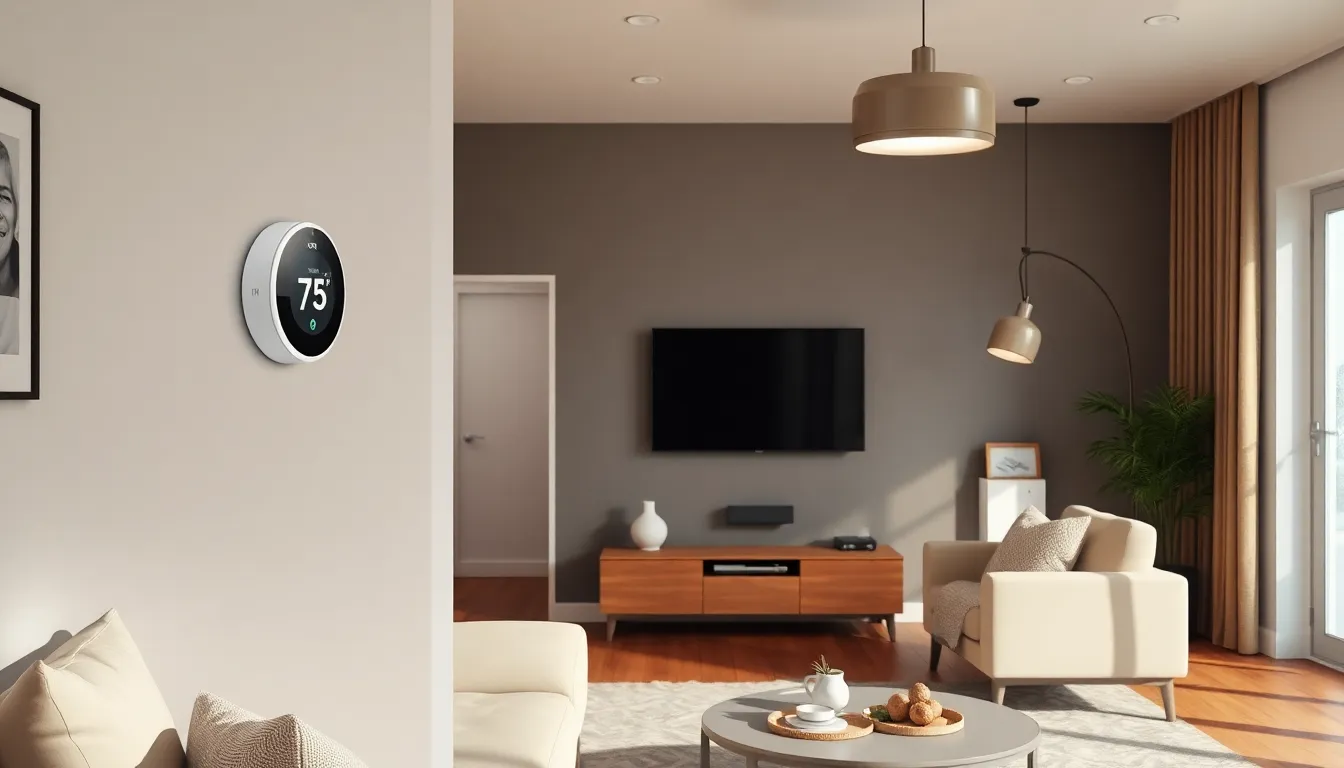Imagine a world where your toaster knows exactly when you need that perfect slice of toast, and your fridge reminds you to buy milk before you even run out. Welcome to the Internet of Things (IoT), where everyday devices are getting a brain upgrade and turning energy management into a smart game. This isn’t just science fiction; it’s a reality transforming how we consume energy.
Table of Contents
ToggleUnderstanding Internet Of Things Energy
The Internet of Things (IoT) energy refers to the interconnection of devices that optimize and manage energy consumption. This concept illustrates how various appliances and systems communicate, leading to efficient energy use.
Definition and Concepts
IoT energy involves smart technologies that connect devices to the internet, allowing real-time data exchange. Sensors and controllers in appliances like thermostats and lighting systems track energy usage. These devices gather and analyze data to enhance performance and reduce waste. Smart grids represent another aspect, integrating multiple energy sources and improving overall efficiency. When these interconnected systems work seamlessly, users experience better energy management.
Importance in Today’s World
Addressing energy challenges requires innovative solutions. IoT energy plays a crucial role in enhancing sustainability. Intelligent systems facilitate energy conservation, contributing to lower environmental impacts. Businesses benefit from cost savings through improved efficiency and reduced operational costs. Homes equipped with IoT devices achieve significant reductions in energy consumption. Efficient energy management supports renewable energy sources, promoting resilience. Overall, IoT energy fosters smarter, more sustainable living.
Applications Of Internet Of Things Energy

The applications of IoT energy extend to various sectors, notably smart homes and industrial automation. These innovations transform energy consumption and management.
Smart Homes
Smart homes leverage IoT energy to enhance comfort and efficiency. Devices like smart thermostats and connected lighting systems allow users to control and monitor their energy usage effortlessly. These systems collect real-time data, enabling adjustments based on occupancy and environmental conditions. Significant energy savings occur as smart technology optimizes heating and cooling patterns. Homeowners experience reductions in utility bills while contributing to a more sustainable future. Integration with renewable energy sources, such as solar panels, further boosts energy efficiency in modern residences.
Industrial Automation
Industrial automation benefits significantly from IoT energy integration. Manufacturing facilities utilize connected sensors and smart machinery to monitor energy consumption in real time. This data facilitates predictive maintenance, minimizing downtime and optimizing operational efficiency. Companies observe lowered operational costs as they streamline energy usage across production lines. Enhanced monitoring allows for immediate adjustments, reducing waste and improving energy distribution. The combination of IoT energy and automation fosters a competitive advantage for businesses, driving innovation while promoting sustainability.
Benefits Of Internet Of Things Energy
The Internet of Things (IoT) significantly enhances energy management, leading to various benefits. Key advantages include improved energy efficiency and substantial cost savings.
Energy Efficiency
Smart devices allow for real-time monitoring of energy consumption. These devices adapt to user habits, optimizing energy usage based on patterns. For instance, smart thermostats adjust settings automatically, leading to reduced energy waste. Integrating IoT with smart grids also enhances overall energy distribution. Systems can balance load demands efficiently, minimizing strain on power sources. According to data from the U.S. Department of Energy, implementing IoT technologies can improve energy efficiency by up to 30%, underscoring their importance in sustainable energy management.
Cost Savings
Reduced energy consumption directly translates to lower utility bills. Smart home systems track energy use, allowing homeowners to identify and eliminate wastage. Manufacturers benefit from IoT energy solutions as well. In industrial settings, predictive maintenance reduces operational downtime, ultimately cutting costs. Studies show that organizations implementing IoT energy can save an average of 10-20% on energy bills. Savings not only enhance profitability but also provide funds for investment in further sustainable initiatives.
Challenges And Considerations
IoT energy faces multiple challenges that require careful attention. Addressing security and integration issues is essential for maximizing the benefits of interconnected devices.
Security Concerns
Security remains a significant issue in IoT energy. With numerous devices connected to the network, vulnerabilities increase, making systems susceptible to cyberattacks. Hackers can potentially manipulate smart devices, compromising user privacy and safety. Protecting sensitive data requires robust encryption methods and regular updates. According to the Cybersecurity & Infrastructure Security Agency, nearly 40% of IoT devices lack basic security features. Ensuring manufacturers adhere to stringent security protocols can mitigate risks and enhance consumer confidence in IoT products.
Integration Issues
Integration challenges also hinder the full potential of IoT energy. Diverse protocols among devices create interoperability issues, making seamless communication difficult. When different manufacturers’ products must work together, compatibility can become a barrier. Standardized communication protocols can facilitate device integration, simplifying user experience. Furthermore, aligning IoT solutions with existing infrastructure requires substantial investment and effort. Research from McKinsey shows that a lack of integration can reduce potential energy efficiency improvements by up to 25%. Overcoming these hurdles is crucial for advancing IoT energy technology and optimizing energy consumption.
Future Trends In Internet Of Things Energy
Future trends in IoT energy focus on evolving technologies and potential advancements in the field. The landscape continues to change, driven by innovation and increased demand for energy efficiency.
Emerging Technologies
5G connectivity plays a pivotal role in enhancing IoT energy devices. With faster data transmission, devices respond more quickly and effectively, making real-time monitoring seamless. Artificial intelligence significantly improves energy management, enabling predictive analytics for optimizing energy consumption. Energy harvesting technologies, which capture ambient energy sources, provide self-sustaining power for IoT devices, reducing reliance on traditional energy sources. Blockchain also emerges as a solution for secure data exchange among devices, increasing transparency in energy consumption while fostering trust among users.
Potential Developments
Smart grids are set for evolution, providing improved demand-response capabilities. These grids use IoT devices to balance energy loads in real time, enhancing efficiency during peak demand. Enhanced integration of renewable energy sources simplifies the transition to cleaner energy. Homes equipped with solar panels and smart meters can interact dynamically with the grid, optimizing energy distribution. Policies promoting sustainability will likely drive the adoption of IoT technologies in building automation, helping to meet carbon reduction goals by increasing operational efficiency. Investments in infrastructure support scaling IoT solutions, ensuring wider and more effective deployment.
The evolution of IoT energy is revolutionizing how energy is managed and consumed. By harnessing smart technologies, individuals and businesses can optimize their energy use while promoting sustainability. The potential for significant cost savings and enhanced efficiency is clear, making IoT energy a vital component of modern living.
As the technology continues to advance, the integration of smart devices and systems will only deepen. Overcoming challenges related to security and interoperability will be crucial for maximizing the benefits of this innovative approach. With ongoing investments and a focus on sustainable practices, the future of IoT energy promises to be both efficient and environmentally friendly.



